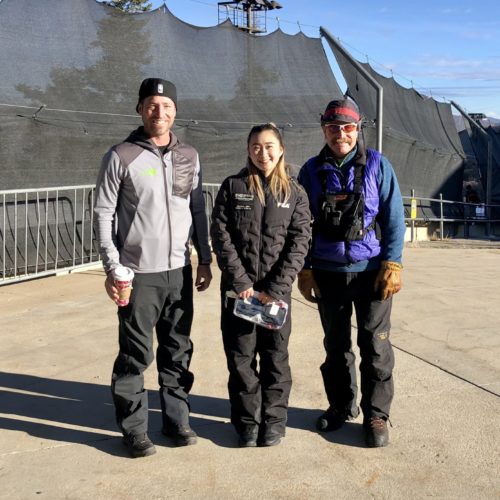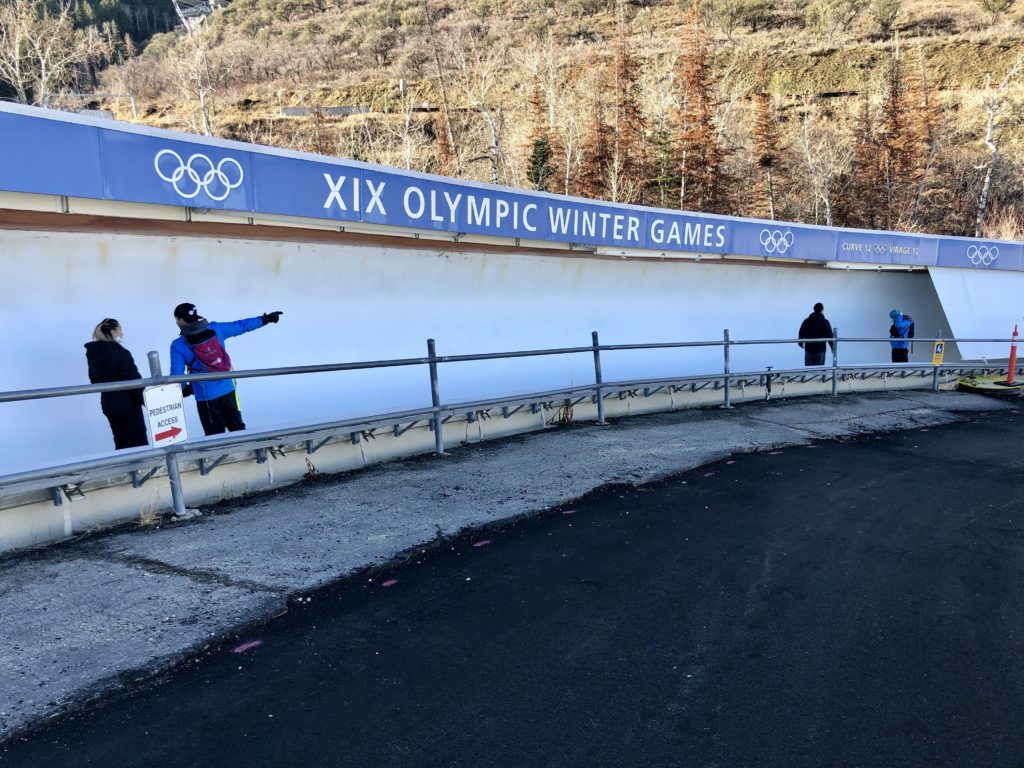News
Malaysian, Cambodian and Vietnamese skeleton/bobsledders at UOP

The Korean 2-person bobsled is unloaded at the top of the Park City sliding track as the sun rises over the hill behind it. Photo: Michele Roepke
PARK CITY, Utah — Athletes representing Vietnam, Cambodia, Malaysia, Russia, Australia, and the USA arrived at the Utah Olympic Park (UOP) yesterday to begin training ahead of next week’s North American Cup (NAC). They’ll make stops in Lake Placid, NY and Vancouver, Canada this month to complete the race series. The teams come from around the world, the NAC name of the race series is derived from the locations of the tracks. For some of these athletes, this is their first trip down the Park City track, not to mention their first trip to America.

Part of winning the bid to host the PyeongChang 2018 Winter Olympics came with a commitment from the South Korean Olympic Legacy organization to invest in sliding sports for, as they put it, smaller Asian nations.
Skeleton athletes Cambodian Keomorororkot Kong or “Keo”, Vietnamese Tran Thi Doan Trang and Nguyen Khanh, Malaysian Yaw Jonathan. are all here, some being coached by their Vietnamese coach, a woman who competed for her country in the PyeongChang 2018 Olympic Games.
Kahn, 21, is being coached this week by assistant UOP skeleton coach, American Matt Griff. The athlete only got turned on to skeleton sliding when it was in Korea for the 2018 Games having been born and raised in Vietnam. When she was younger, she was a summer track and field runner but instantly knew, upon seeing skeleton that she wanted to experience the extreme speeds involved in the sliding sport. She said she watches all the YouTube videos of other athletes she can in an effort to learn all she can about how to do the sport.
Born and raised in Sandy, Utah, Daniel Klausz, 31, told TownLift his mother is “Half Vietnamese.” His father is Hungarian. Klausz is representing Vietnam. He calls California home these days but spends a large amount of his year in Korea training on their track, the closest one to Vietnam, Cambodia, Malaysia, and Australia.
Klausz told TownLift, “The chances of us making Beijing are kind of a little bit lower, but we’re gonna try our best to see if we can get there and it’d be awesome because it would be Vietnam’s first winter Olympics representation ever.”
Any and all international athletes need five races on three tracks within two years to be able to qualify for Intercontinental Cup (ICC) and World Cup. The NAC is the first tier of competition, Europe’s version is called the Europa Cup. The second, the middle tier, is the Intercontinental Cup (ICC). Athletes then also have to have points and beat other athletes out of finite spots in the World Cup circuit.

Klausz is a former skeleton athlete who has taken many runs down this track before and has recently switched to bobsledding. Skeleton’s a sport that is head-first on a single sled. He said to TownLift, “I’m hoping the skeleton runs translate, but I’m not completely sure how they’ll translate as I pilot my first bobsled runs this morning. It’s exciting.” He’s thankful for the opportunities he’s being provided by the Korean Olympic Legacy organization.
For a bobsledder’s first trip down the length of the Park City track, the track crew lowers each sled down manually, slowly, walking it into curve 2 via a belaying system, thus decreasing the gravitational speed factor, and is there to grab the sled at the end of the run when it’s come to a stop, facilitating athlete confidence in their early learning phase.
Bobsleds don’t compete against skeletons, however, the two sliding disciplines do travel the world together under the International Bobsled Skeleton Federation (IBSF).
A second American assistant UOP skeleton coach is Nick Vienneau who, this week is coaching athletes who represent Australia. He was the coach for Jamaican and for Nigerian sliders during the PyeongChang 2018 Olympics.
Of the skeleton athletes training yesterday at the UOP, the Russians got the unofficial fastest start-time on the day.



Video: Athletes taking their first track walk to learn the curves. Track crew members, who also pilot passenger sleds, Jake Pelger and Mike Bemis are the gatekeepers. The audio heard is the metal, spiked, strapped-on creepers on their shoes for traction on the ice.


















